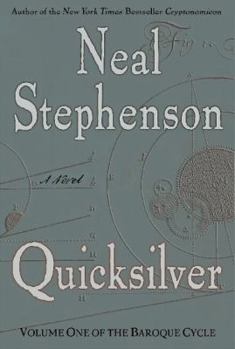Quicksilver (The Baroque Cycle, Vol. 1)
Select Format
Select Condition 
Book Overview
Neal Stephenson's Quicksilver is here. A monumental literary feat that follows the author's critically acclaimed New York Times bestseller Cryptonomicon, it is history, adventure, science, truth, invention, sex, absurdity, piracy, madness, death, and alchemy. It sweeps across continents and decades with the power of a roaring tornado, upending kings, armies, religious beliefs, and all expectations.
It is the story of Daniel Waterhouse, fearless thinker and conflicted Puritan, pursuing knowledge in the company of the greatest minds of Baroque-era Europe, in a chaotic world where reason wars with the bloody ambitions of the mighty, and where catastrophe, natural or otherwise, can alter the political landscape overnight. It is a chronicle of the breathtaking exploits of "Half-Cocked Jack" Shaftoe -- London street urchin turned swashbuckling adventurer and legendary King of the Vagabonds -- risking life and limb for fortune and love while slowly maddening from the pox ... and Eliza, rescued by Jack from a Turkish harem to become spy, confidante, and pawn of royals in order to reinvent a contentious continent through the newborn power of finance.
A gloriously rich, entertaining, and endlessly inventive novel that brings a remarkable age and its momentous events to vivid life -- a historical epic populated by the likes of Samuel Pepys, Isaac Newton, William of Orange, Benjamin Franklin, and King Louis XIV -- Quicksilver is an extraordinary achievement from one of the most original and important literary talents of our time.
And it's just the beginning ...






